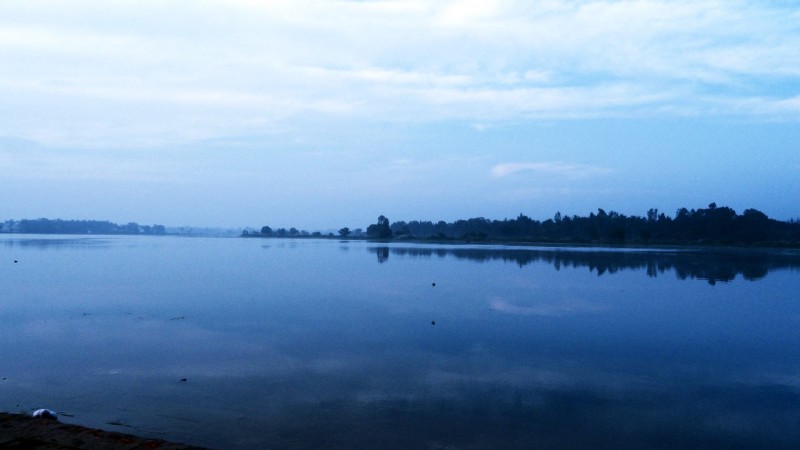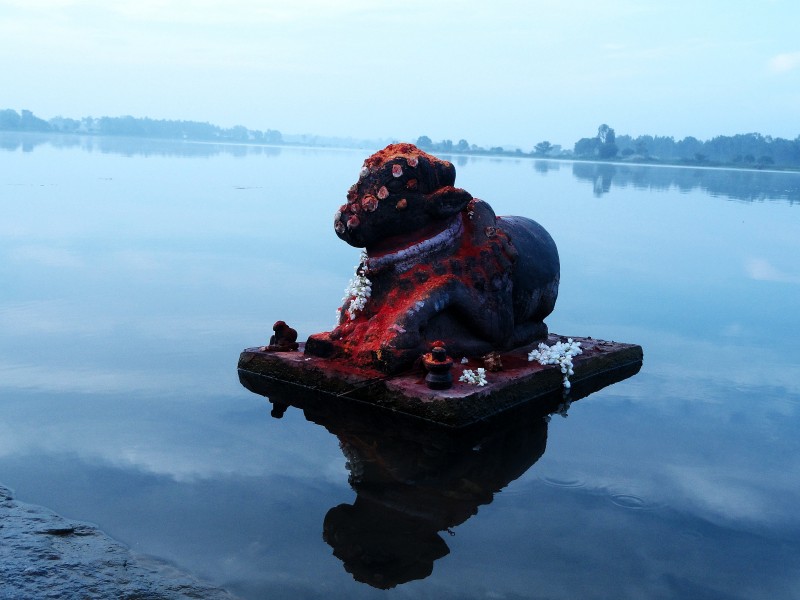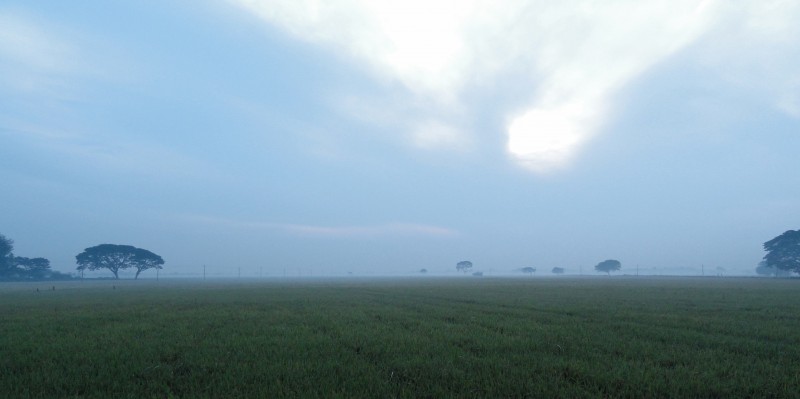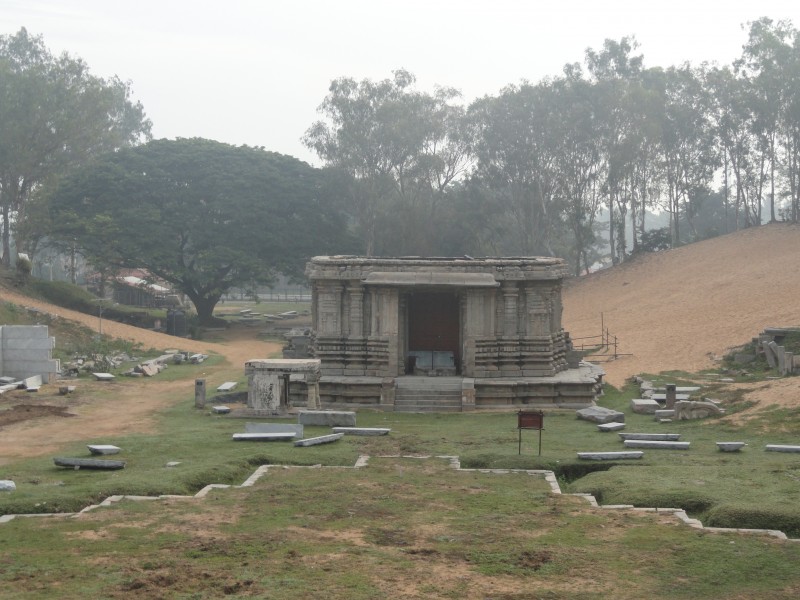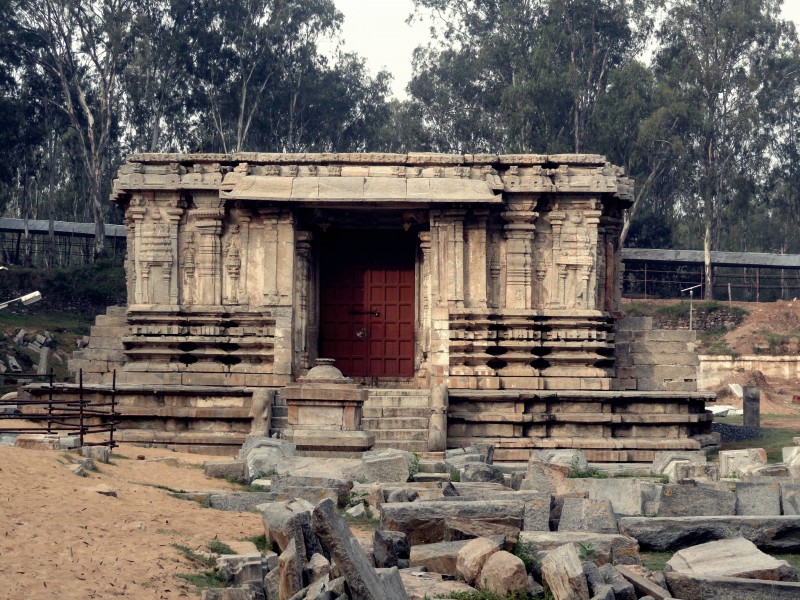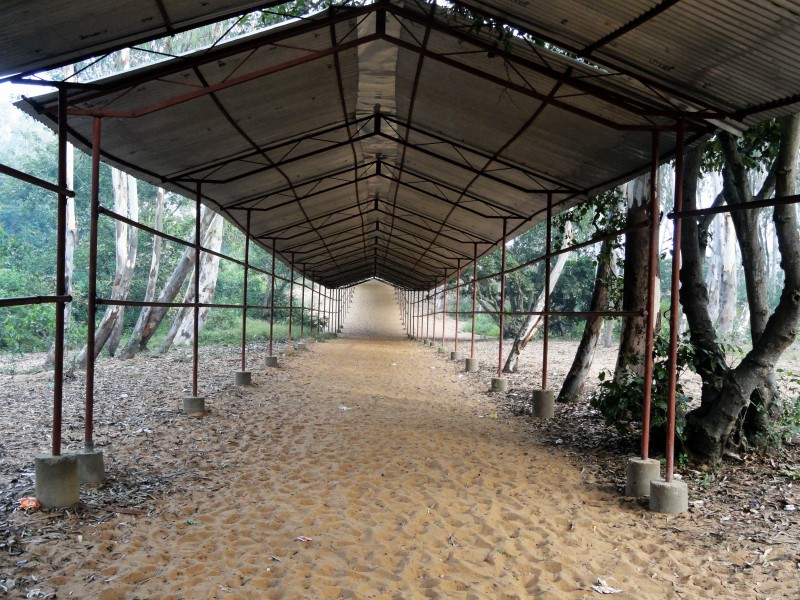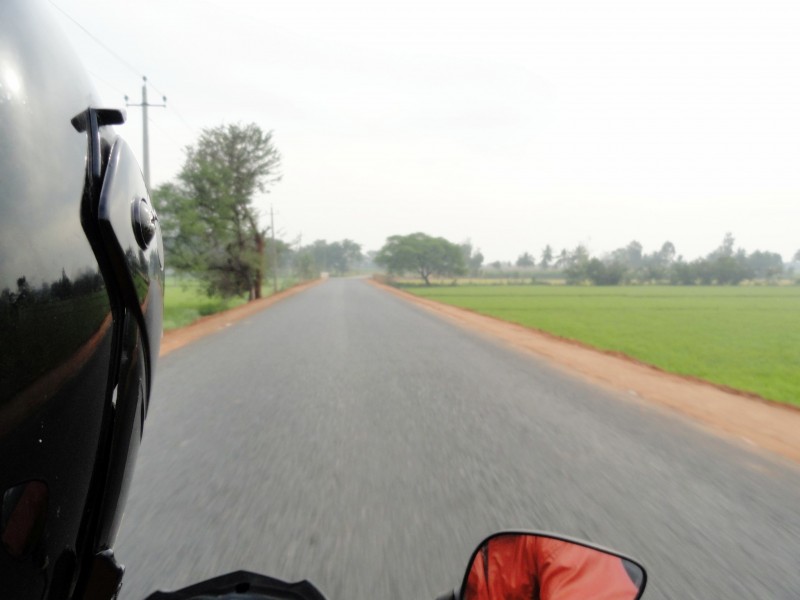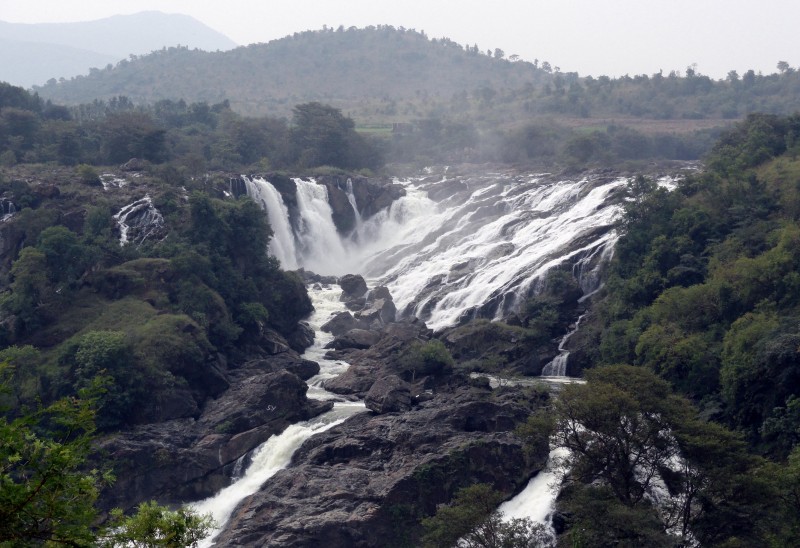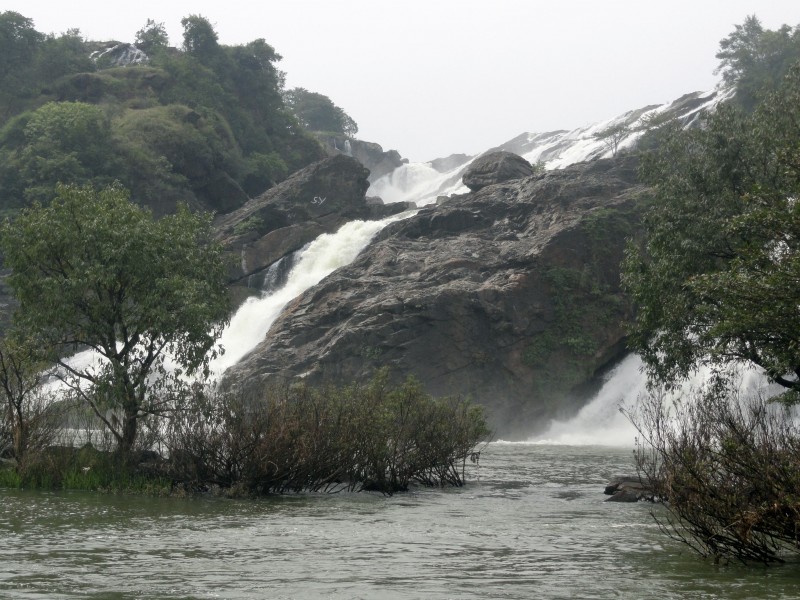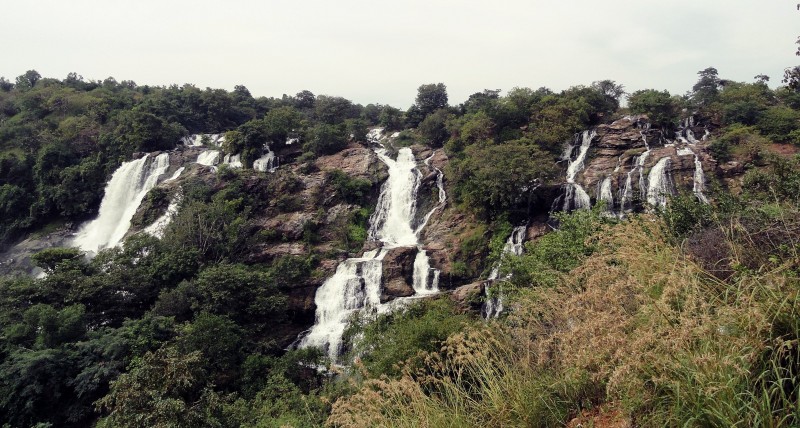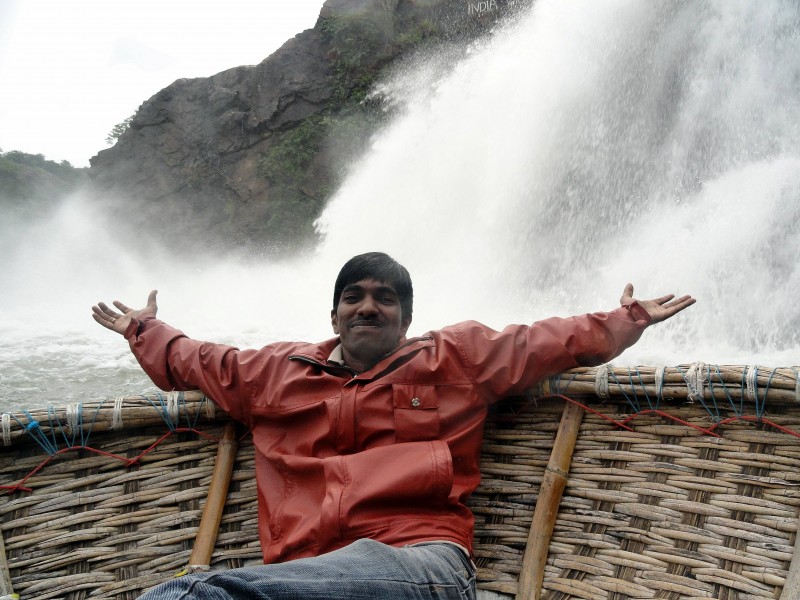It’s time for another trip ! This time we planned a day-cation to Shivasamudram via Talakad on bike !
It’s really a wonderful experience to travel all night on bike ! yeah but dangerous too.
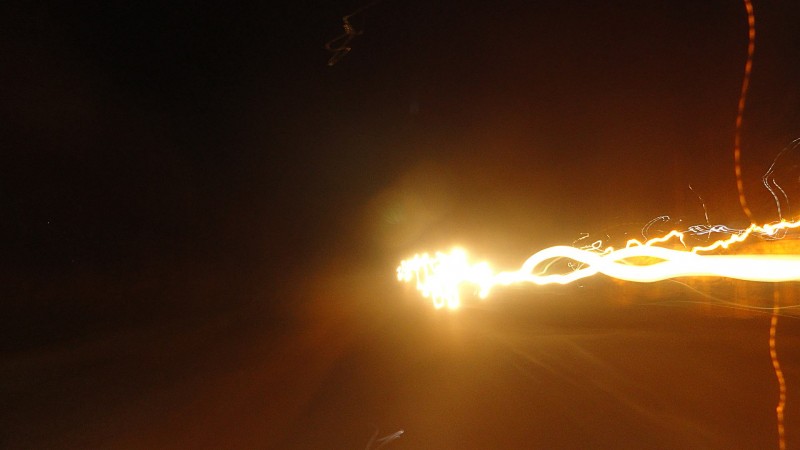 (low shutter speed photography – captured while on the ride)
(low shutter speed photography – captured while on the ride)
So here is our initial plan : Bangalore > Talakad > Shivasamudhra > Talakad > Somnathpura. However we missed Somnathpura 🙁 due to genuine personal unhealthy reasons .
We started from Bangalore by around 2.30 AM . First time we felt really happy to drive on Bangalore roads ! ( Hope you don’t need explanation its 2.30 A.M ).
How to reach Shivasamudra
On Bike
There are two ways to reach Shivanasamudra from Bangalore.
From Bangalore, you can drive along the Bangalore Mysore highway till Maddur. Immediately after Maddur Bus station, take a left towards Malavalli. Keep going further straight from Malavalli and you’ll reach Shivanasamudram. This route would take around 135 kilometers and the road is good upto Maddur, after which, the road condition deteriorates. However, this is the best road to reach Shivanasamudra from Bangalore. A non-stop journey would take approximately 3 hours from Bangalore.
Alternately, one can reach Malavalli from Bangalore via Kanakapura. Take the Kanakapura road from Bangalore which is in good condition. Immediately after Kanakapura, the road branches into two. Take the road which is slightly to the right to reach Malavalli. The left branch leads to Sangama, Makedattu and Chunchi falls. The stretch from Kanakapura to Malavalli is not in good condition and road repair work is in progress at some places.
On Bus:
Shivasamudhram is not well connected by buses. You can only reach up to Kollegala by bus from Bangalore as well as Mysore. From Kollegala, one can hire cab or autorickshaw to reach the falls.
It’s always advisable to visit on your own vehicle !
And our bike :
We had chosen the Kanakapura road to reach Shivasamudhra coz that way we can reach Talakad a little earlier compared to Mysore highway road. Our intention is to capture early sunrise photos near river kaveri at Talakad but our fate that day ( yah not just morning ) is full of mist.
So we reached Talakad around 6.30 and captured these…
A brief note on Talakad history
Talakad is one of the historical places of Karnataka. It is famous for the shiva temple Vaidyanatheswara. It is 45 km from Mysore and 185 km from Bangalore in Karnataka, India. A historic site, Talakad once had over 30 temples that today are buried in sand. Now it is a scenic and spiritual pilgrimage center.
History : ( from Wiki )
The origin of the town in lost in antiquity; but one tradition is that its name was derived from two Kirāta brothers, Tala and Kādu, who, cutting down a tree which they saw wild elephants worshiping, discovered that it contained an image of Vishnu, and that the elephants were rishis transformed. The tree being miraculously restored, all obtained mōksha and the place was named Tala-kādu, which was translated into Sanskrit as Dala-vana. Two stone images declared to represent the brothers are pointed out in front of the temple Vaidyēsvara. In a later age, Rāma is said to have halted here on his expedition to Lanka.
The earliest authentic notice of the city of Talekād or Talakād, in Sanskrit Dalavana-pura, is in connection with the Ganga line of kings. Harivarma, who has been assigned to 247-266 A.D., was, according to an old chronicle, installed at Skandapura (said to be Gajalhatti, in the Coimbatore country, near where the Moyār flows into the Bhavāni), but resided in the great city of Dalavanapura in the Karnāta-dēsa. Thenceforward Talkād became the capital these powerful sovereigns and there the subsequent kings of that line were crowned.
At the beginning of the 11th century, the Gangas succumbed to the Chōlas, who captured Talkād and gave it the name of Rājarājapura. But about a hundred years later it was taken by the Hoysala king Vishnuvardhana, who drove the Chōlas out of Mysore. After this time we find that Talkād was composed of seven towns and five mathas or monastic establishments. The town of Māyilangi or Malingi, on the opposite side of the river, was also a large place, and had the name of Jananāthapura. Down to the middle of the 14th century, it remained a possession of the Hoysalas, and then passed into the hands of a feudatory of the Vijayanagar sovereigns, whose line appears to be known as that of Sōma-Rāja.
In 1634 it was conquered by the Mysore Rāja under the following circumstances. Tirumala-Rāja, sometimes called Srī Ranga Rāyal, the representative of the Vijayanagar family at Seringapatam (Srirangapatna), being afflicted with an incurable disease, came to Talkād for the purpose of offering sacrifices in the temple of Vedēsvara. His wife Rangamma was left in charge of the Government of Seringapatam ; but she, hearing that her husband was on the point of death, soon after left for Talkād with the object of seeing him before he died, handing over Seringapatam and its dependencies to Rāja Wodeyar of Mysore, whose dynasty ever afterwards retained them. It appears that Rāja Wodeyar had been desirous of possessing a costly nose-jewel which was the property of the Rāni, and being unable to obtain possession of it by stratagem, and eager to seize any pretext for acquiring fresh territory, he levied an army and procceded against Talkād, which he took by escalade ; the Rāja of latter place falling in the action. The Rāni Rangamma thereupon went to the banks of the Cauvery, and throwing in the jewel, drowned herself opposite Mālingi, at the same time uttering a three-fold curse,-“Let Talakād become sand ; let Mālingi become a whirlpool ; let the Mysore Rājas fail to beget heirs.” The latter part is now happily of no effect.
Curse of Talakad
The Talakad curse has established itself in the folklore as a miracle since the early part of 16th century because of two strange events visible even to date: (i) Talakad, an historically vibrant city, is now being submerged under sand dunes several meters deep, and (ii) the Mysore royal family have faced problem in having a rightful heir to the throne since the 17th century. Both these events linked to an apparent curse by a pious lady (Alamelamma) have defied logic. Based on the data from diverse sources and field studies, K. N. Ganeshaiah has reconstructed the possible chronology of events of this acclaimed miracle. Ganeshaiah argues that the Talakad phenomenon represents an ecological disaster unintentionally wrought on to a vibrant civilization at this place and in this sense the curse per se is an intelligently inserted story as an overlay. Using this example he discusses the possible process through which the miracles or myths of this kind survive in a society. ( Source Link )
Interesting thing to note is , in Talakad there are five shrines of Lord Shiva which are called Pancha Linga. These temples are buried under the sand (except one). These temples are opened once in twelve years and a ceremonial worship is done.
Here are some buried temples …
On the way to temple
Heading to Shivasamudhra
While on the way to water falls, we experienced the famous quote “Infront there is a crocodile festival” . The road to Shivasamudhra from Talakad can be the worst-est ever !
At last we reached Shivasamudhra after 2 long hell hours of Journey.
There are 2 falls about a km apart.
- Gagana Chukki (90 metres)
- Bhara Chukki (69 metres)
And here is Laxman..
Best time to visit Shivasamudhra Waterfalls : June to September ( to experience full flow )
On the whole its a wonderful spiritual as well as joyful experience when you visit Talakad town and Shivasamudhra falls together.
Happy Traveling 🙂

